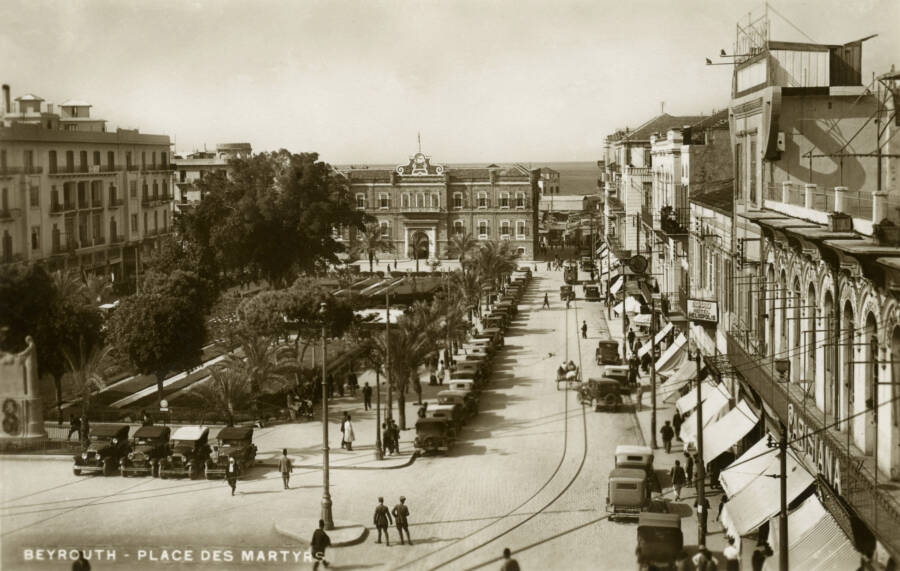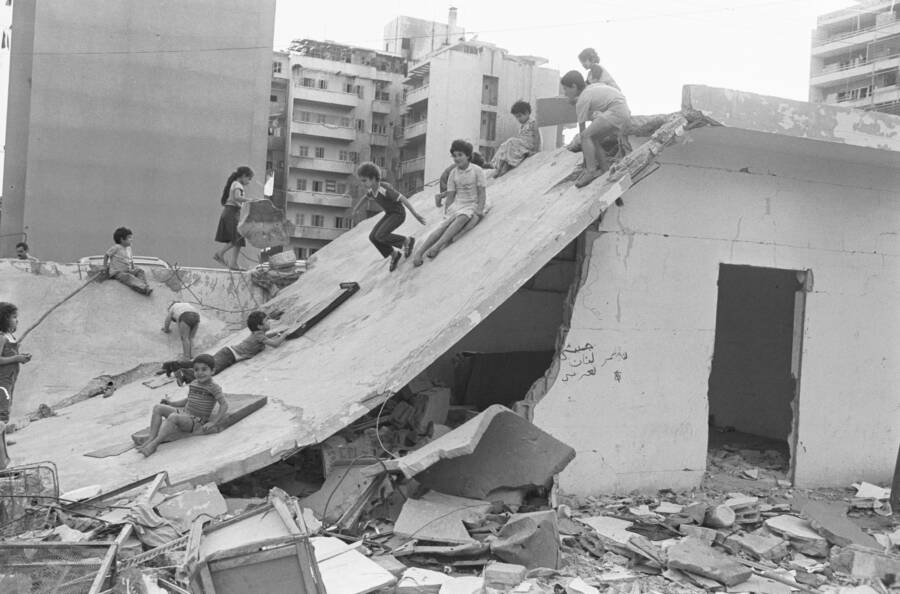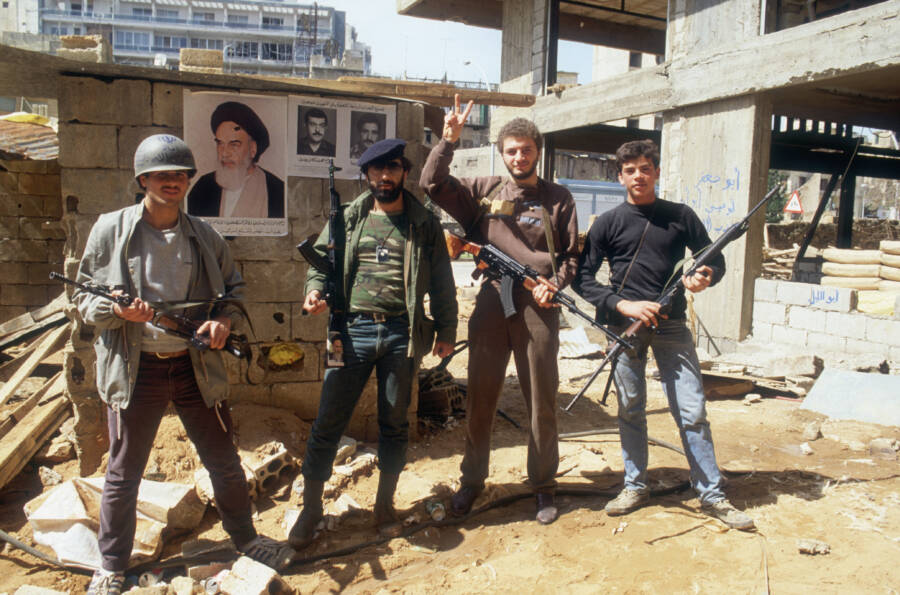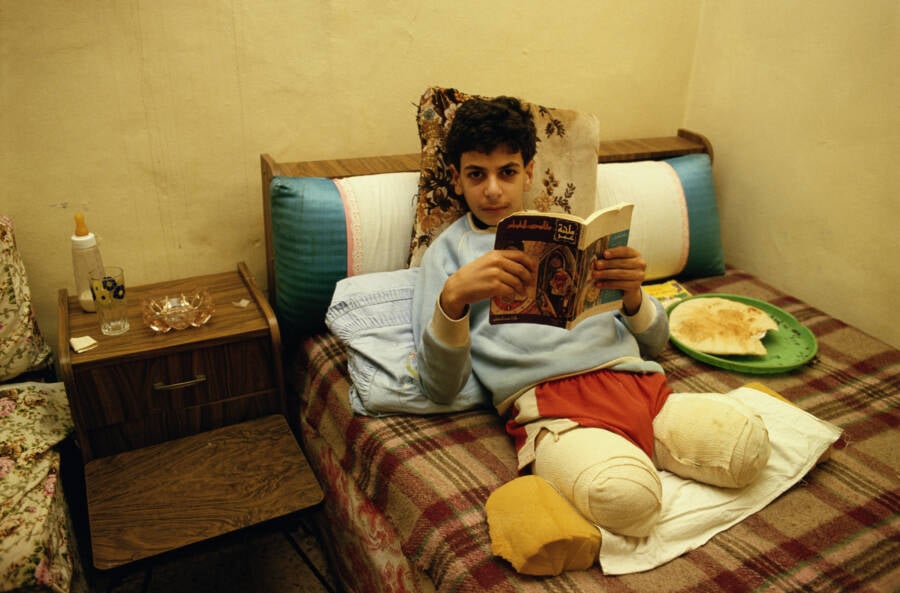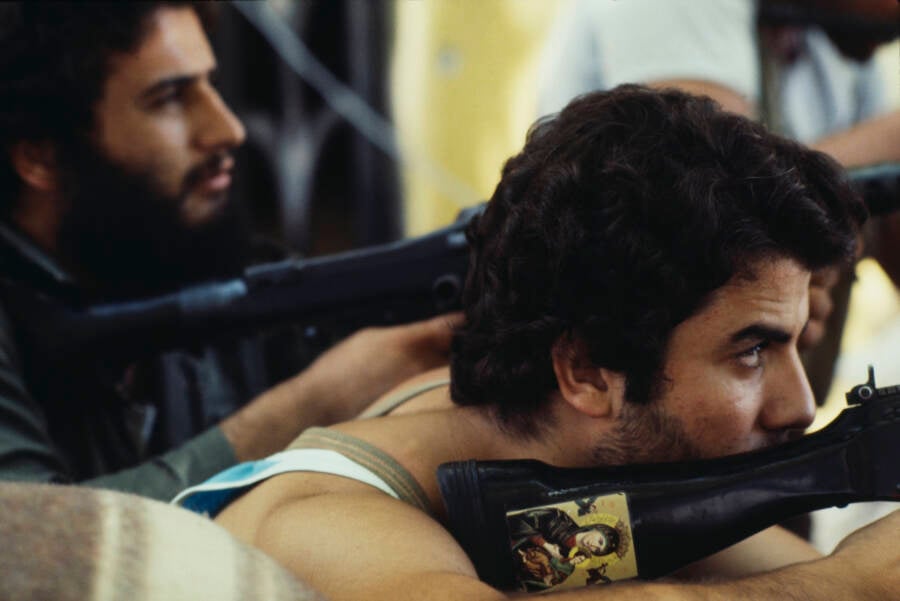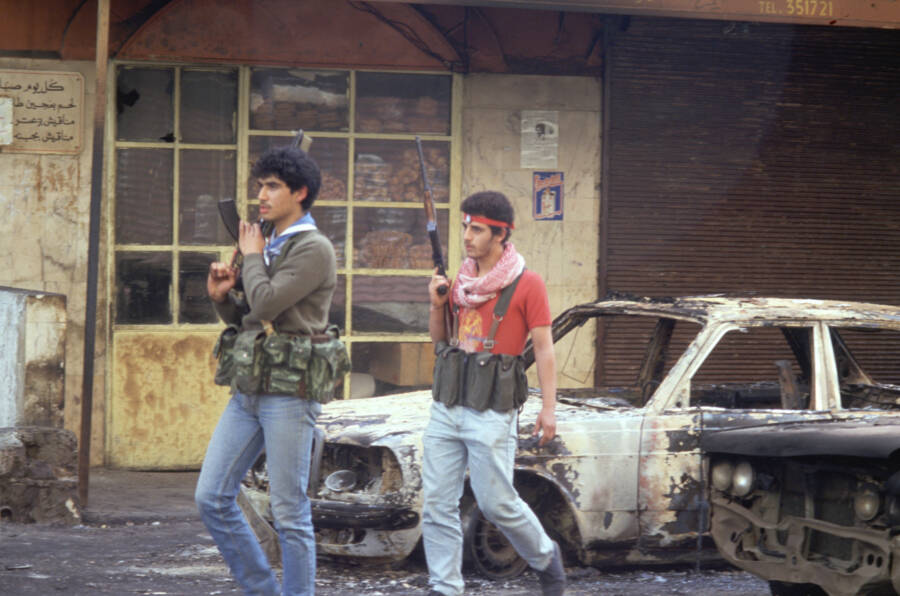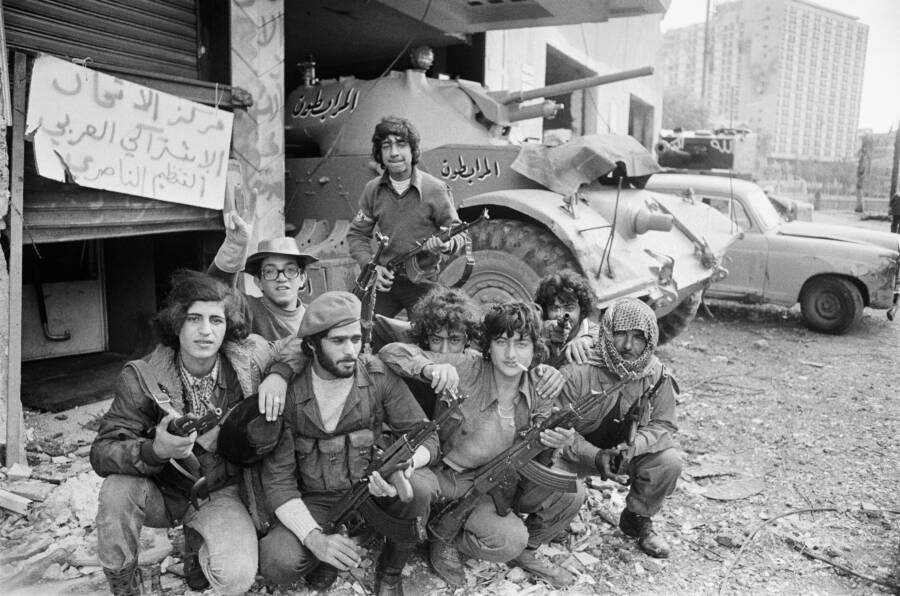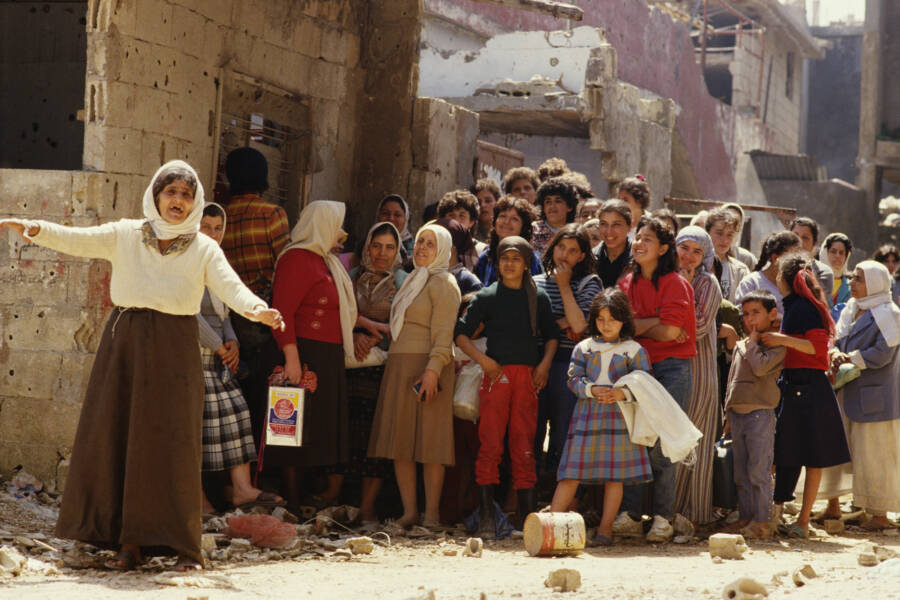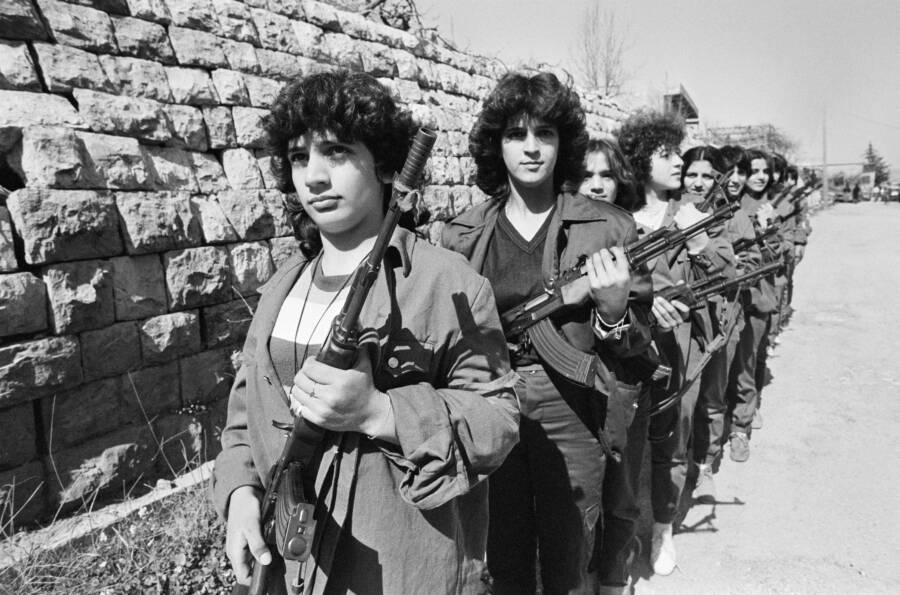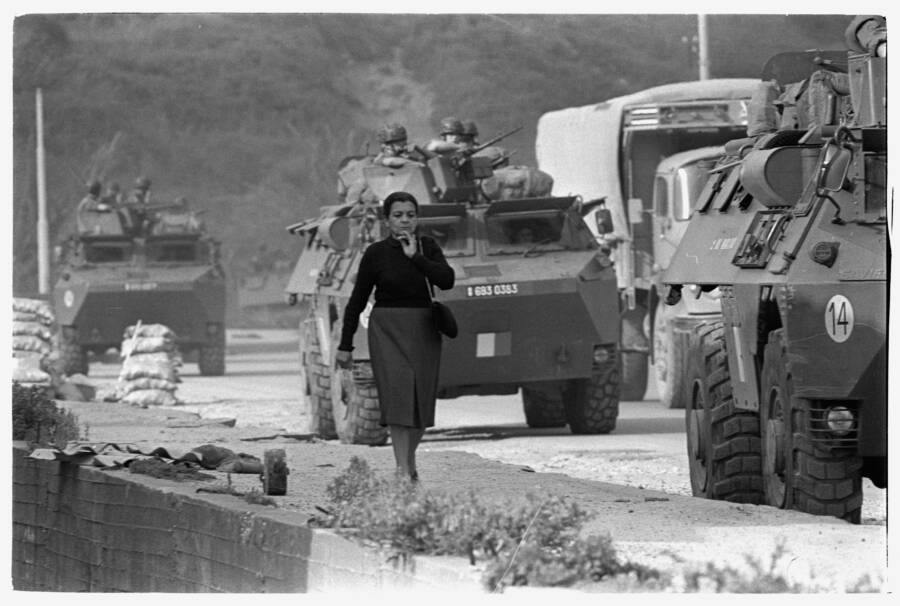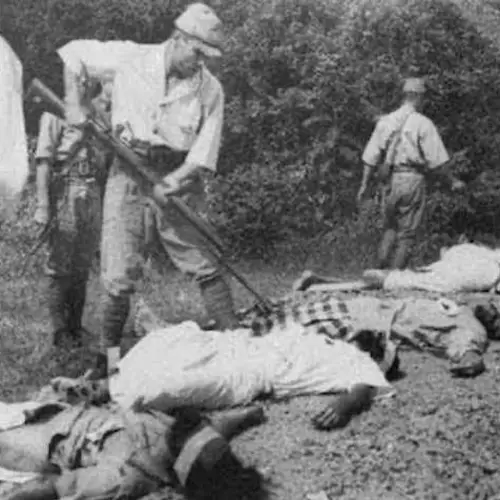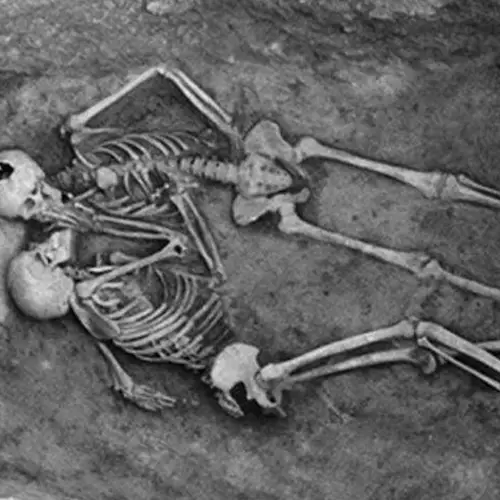Sparked by years of growing tension between different religious, political, and socioeconomic groups, the Lebanese Civil War exploded in 1975 — and endured for 15 turbulent years.
For years, Beirut, Lebanon, was known as the "Paris of the Middle East." But the Lebanese Civil War, which broke out in 1975 and lasted for 15 agonizing years, would reduce much of the magnificent city to rubble.
Born out of complicated divisions in Lebanese society, from religion to politics to wealth, the war raged within Lebanon's borders but drew in combatants from around the world. Syrians, Israelis, Palestinians, Americans, and others all entered the country at one point or another during the conflict.
In the end, the Lebanese Civil War resulted in an estimated 120,000 fatalities as well as a mass exodus from the country. And though the conflict ended in 1990, the ramifications of the war are felt in the region to this day.
Above, look through 33 unsettling photos of the Lebanese Civil War that throw this bloody conflict into sharp relief. And below, learn how this complicated war started, endured, and came to a murky end.
How The Lebanese Civil War Began
As the Middle East Research and Information Project (MERIP) notes, the causes of the Lebanese Civil War can appear seemingly "incomprehensible." But the roots of the conflict basically come down to the country's recent history, dynamics in the region, and conflicts among different Lebanese groups.
In the midst of World War II, Lebanon became an independent state following decades of French control. (Lebanon had previously been part of the Ottoman Empire until its dissolution following World War I).
And as the BBC explains, the National Covenant of 1943 set up the new state by creating a power-sharing system between Christians and Muslims. Based on a decade-old census, it gave Christians a majority in the parliament as well as the presidency. Meanwhile, the prime minister would be a Sunni Muslim, and the Speaker of the Chamber of Deputies a Shia Muslim.

Keystone-France/Gamma-Keystone via Getty ImagesA view of Beirut, Lebanon, in the early 20th century. The city was once known as the "Paris of the Middle East."
But the dynamics in Lebanon significantly changed in the subsequent decades. Hundreds of thousands of Palestinians poured into Lebanon following the Israeli takeover of Palestinian land during the Six-Day War in 1967. The Palestine Liberation Organization (PLO) set up headquarters in Beirut and quickly became a target of Israeli forces.
Meanwhile, tensions between different social groups in Lebanon were escalating. As MERIP reports, most Christians in the country were wealthy, whereas most Muslims were poor. What's more, many had different viewpoints on whether or not Lebanon should be a part of the Arab world, the Muslim world, aligned with the Soviet Union, or aligned with the West.
It was under these circumstances that the Lebanese Civil War began in 1975.
15 Years Of Conflict
Most say the Lebanese Civil War started on April 13, 1975. Then, a Christian militia known as the Phalangists attacked a bus in the Ayn-al-Rummanah district of Beirut. Claiming to be acting in retribution for an attack on a church, they killed 27 passengers on board, most of whom were Palestinian.
As a result, the Lebanese capital quickly devolved into violence. A "green line" divided the city between the Christian factions in the eastern part of Beirut and the Muslim factions in the western part. And even though the conflict was, on the surface, a civil one, it swiftly drew in outside actors.
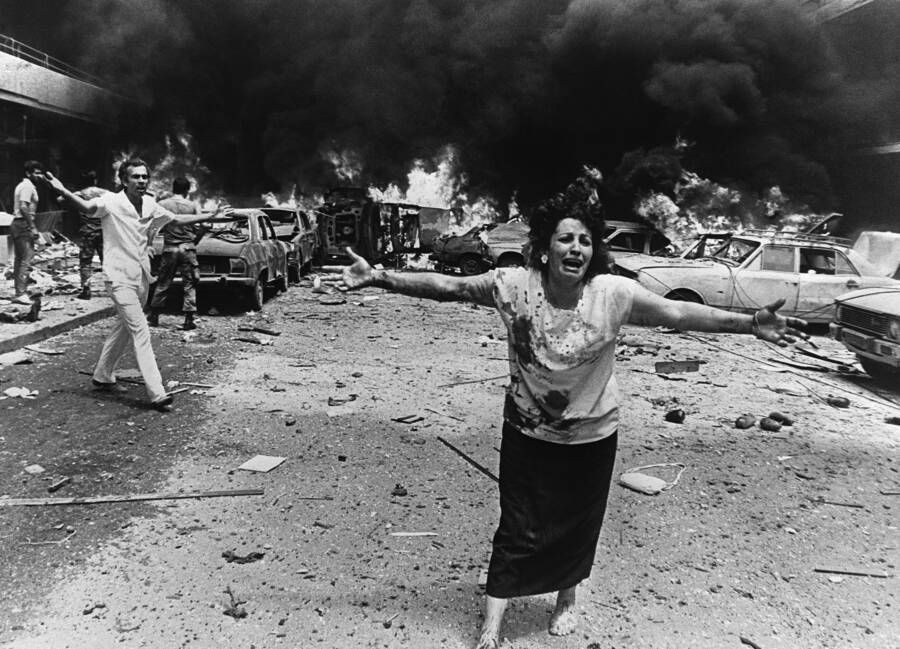
KHALIL DEHAINI/AFP via Getty ImagesA woman cries in shock after a car bomb explodes in West Beirut. August 1986.
Syrians, who had initially supported the PLO, entered the country in 1976 to defend the Christian factions. (They would later change sides again when Christian Lebanese groups sided with Israel). Two years later, Israeli forces launched an invasion of Lebanon following a Palestinian attack.
The next several years saw bombings, assassinations, and failed attempts to restore peace. American and European peacekeepers arrived on the scene in 1982, but U.S. troops withdrew two years later after a number of devastating suicide attacks.
Then, in 1988, two factions in Lebanon tried to seize power. Though a president was soon elected under the Arab League peace plan — Rene Mouwad — he was assassinated in 1989.
Despite the chaos, the Lebanese Civil War finally came to an end in 1990 with a peace agreement. But the instability in Lebanon never really calmed.
The Violent Postwar Years
Though the Lebanese Civil War technically lasted from 1975 until 1990, ramifications from the conflict persisted across the region for decades afterward. Syrian, Israeli, and Lebanese factions continued to battle in different ways, from suicide attacks to assassinations.
What's more, the civil war irrevocably changed Lebanon. Not only had the conflict reduced much of the "Paris of the Middle East" to rubble, but it had left violent scars across the nation's psyche. It resulted in some 120,000 fatalities, and an estimated 1 million people fled from the violence.
And there's a connection between the Lebanese Civil War and one of the country's most recent tragedies. In 2020, 552 tons of neglected ammonium nitrate exploded in Beirut's port. According to The New York Times, the disaster killed nearly 200 people and injured 6,000.
As many have noted, the instability that followed 15 years of civil strife perfectly set the scene for such an event, as various factions in Lebanon continued to battle for political influence, including at places like the port.
Look through the gallery above to see 33 heartbreaking photos of the Lebanese Civil War in striking detail, from the people who fought in the streets to the hollowed-out buildings that the war left behind.
After reading about the Lebanese Civil War, look through photos of the United States' own Civil War, which endured from 1861 until 1865. Or, look through shocking images from the Mexican Drug War.
